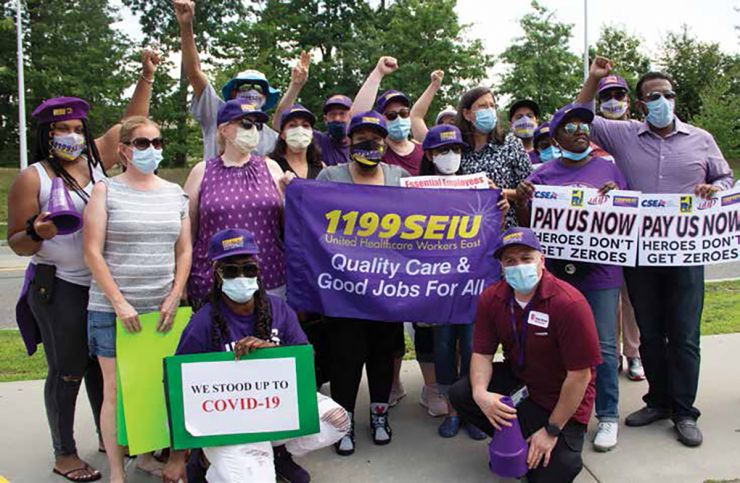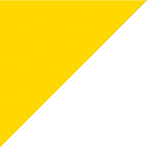Heroes, Not Zeroes
September 8, 2020
Workers fight for recognition pay.

Since the COVID-19 outbreak, caregivers have been lauded from all quarters as the heroes saving our country. But when it comes to the recognition pay workers deserve for manning the front lines during the pandemic, generosity dries up.
While many employers have been exemplary in the efforts to recognize and compensate caregivers, others have forced workers out into the streets to take actions demanding the recognition and hazard pay they deserve.
On Long Island in New York, 1199SEIU members from three institutions affiliated with Stony Brook Medical Center have been fighting for recognition pay through a potent public campaign and several marches and demonstrations. Dietary workers at Stony Brook, and its Southampton and Eastern Long Island Hospitals have been struggling with the powerful institution for recognition pay. At Southampton, which has received millions from wealthy donors, workers say management is pushing them to work through the busy summer season with the intention of scaling back in the fall.
Hundreds of Stony Brook workers were joined by local officials at a June 21 march and rally at the institution’s main campus in Suffolk County.
“Stony Brook has consistently refused to acknowledge meaningfully the contributions of frontline workers during the COVID-19 crisis,” said 1199SEIU Executive Vice President Steve Kramer.
“This is a well-resourced institution that has consistently benefitted from the good will of the community, not to mention wealthy donors. This institution could have done the right thing by all these workers, but instead chose to fight us every step of the way. So now we are out here with our sister and brother union members calling on Stony Brook, Southampton and Eastern Long Island to do the right thing by the workers who have so faithfully supported these hospitals throughout the pandemic.”
In New York’s Hudson Valley, veteran healthcare workers say they had never felt so much pressure as they did when the first wave of the COVID-19 pandemic hit their hospital, Orange Regional Medical Center, in Middletown, NY. The severity of the illness, rapidly changing protocols, the long hours, extreme contagion, and the fear that you could infect a loved one added to a lingering physical and mental fatigue that often was unbearable.
After several traumatic weeks of caring for patients and witnessing the death of some of them, 1199SEIU members Rachel Dunham, a unit clerk, and Rich Panio, a respiratory therapist, both succumbed to the virus. In addition to getting sick (both eventually recuperated and went back to work at the hospital), Dunham’s worst fear came true; she passed on the virus to her 83-year-old mother, who died.
In the previous month, Dunham and Panio were among more than 3,000 1199SEIU members working under the umbrella network, the Greater Hudson Valley Health System, (GHVHS, recently renamed Garnet Health), who signed and distributed petitions asking the administration for hazard pay.
“Even before I got sick, my coworkers and I knew that essential workers in other fields were compensated for holding down the fort. In our petitions, we asked that our sacrifices be acknowledged and our value in caring for patients and protecting the community be considered,” Dunham said.
At first, the petition was turned down by Human Resources, although they signaled that once federal aid was distributed, they would reconsider.
To help them make their decision, the GHVHS members launched an aggressive campaign at Orange Regional Medical Center, Catskill Regional Medical Center, and the associated offsite medical groups. It included signs in car windows that administrators could not miss because their offices overlooked the parking lot. Members also did Friday walk-ins and wrote sincere and detailed emails to individual administrators about how COVID-19 had affected their lives.
On May 15, union leaders received a letter from CEO Scott Bakulis stating that members would receive a bonus for “the amazing work they have done during the past several weeks of COVID-19 pandemic.” On May 19, full-time employees deemed high-risk received $5,000; those at medium risk, $3,500; and those at low risk, $2,500.
Edna Stachurski, a recovery room nurse, said, “We were recognized for the hard work we did in this horrible time, and they divided it among all employees — including housekeepers, kitchen staff. That, to me, speaks to how they feel about their staff.”
Laura Mosco, an endoscopy tech said, “The hazard pay bonus let me know that I was considered more than a number.”
While the GHVHS bonus is unparalleled in the state, other healthcare employers in the Hudson Valley, have also recognized their frontline workers by providing enhanced compensation or bonuses: Montefiore St. Luke’s Cornwall Hospital, $2,500, Montefiore Nyack Hospital, $2,500, Saint Joseph’s Medical Center, $1,000, St. Vincent’s Hospital, $1,000, and four Wingate nursing homes and Archcare at Ferncliff Nursing Home.
Still, some of the Hudson Valley’s largest hospital systems including, Nuvance Health (Vassar Brothers Medical Center and Putnam Hospital) and the Westchester Medical Center Health Network (Good Samaritan Hospital, Bon Secours Hospital, MidHudson Regional Hospital, HealthAlliance Hospital, and Crothall/ Compass at WMC) have refused to compensate their staff, and at press time members were planning actions to press management for what they deserve.
1199 Magazine | July / August 2020

